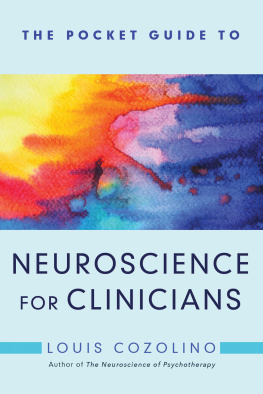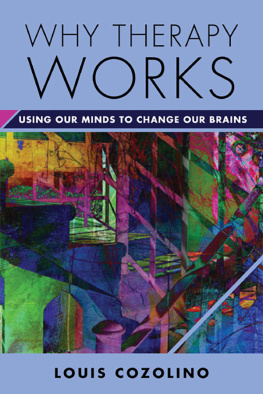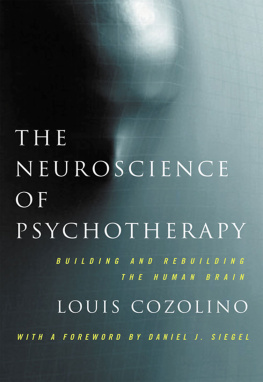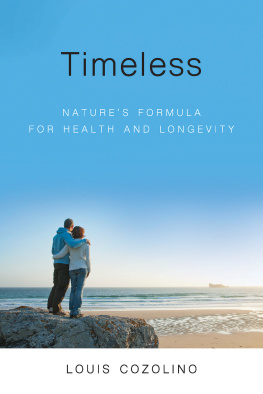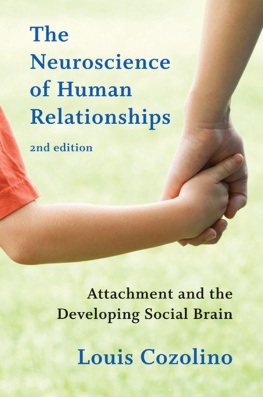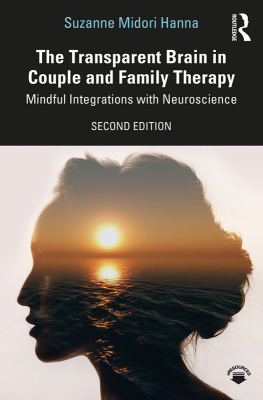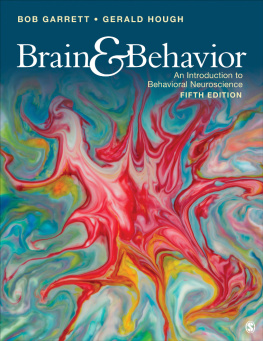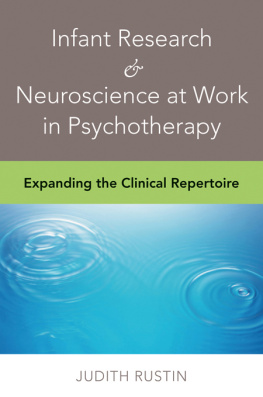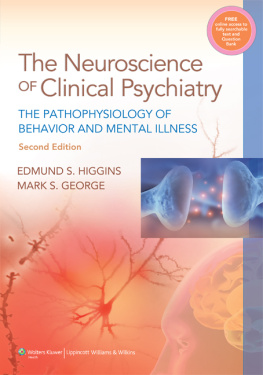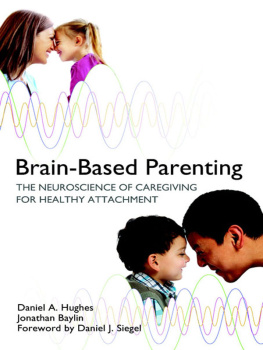
LOUIS COZOLINO
THE POCKET
GUIDE TO
NEUROSCIENCE
FOR CLINICIANS

W.W. NORTON & COMPANY
Independent Publishers Since 1923
New York London
A NORTON PROFESSIONAL BOOK
THE POCKET GUIDE TO
NEUROSCIENCE FOR CLINICIANS
ADVANCE ACCLAIM
Written with concision, elegance, and anecdotal verve, this book combines cutting-edge science and the experience-based insights of a master clinician. Lou Cozolinos guide to applied neuroscience will be a treasured resource for therapists, physicians, and counselors for a long time to come.
Gabor Mat, M.D., author, In The Realm of Hungry Ghosts: Close Encounters With Addiction
Few people have Cozolinos clear understanding of the indivisible nature of mind, brain, and body. Fewer still can make these concepts so accessible, accurately describing the brain as a social organ and humans as complex beings that have been shaped by evolution. Exploring the interface of science and psychotherapy, this book encourages us to know relationship as our natural habitat and to appreciate the conscious and unconscious layers of communication that influence us.
Mary L. Meador, M.D., Board Certified Family Physician in private practice, Education Chair for Global Association of Interpersonal Neurobiology, Teacher of Science of Interpersonal Neurobiology, Portland Community College, Lecturer and author on integrating Interpersonal Neurobiology into healthcare, education, and families
Lou Cozolinos new book is a must-have for all therapists and practitioners who support and care for individuals who carry with them pain and hurt. It is a way of looking through the lens of knowledge about the brain, mind, and body to understand deeply the ways in which relationships offer the resources for healing and transformation. Lou is a thoughtful and kind guide to the neuroscience of clinical work. (You will want to read the book again and again. Each time, you will discover something new.)
Joe Tucci, Ph.D., CEO of the Australian Childhood Foundation
Learning is the only thing the mind never exhausts, never fears, and never regrets.
LEONARDO DA VINCI
About the time as I began my training as a therapist during the 1970s, I happened to read an article about the brain for a class in biological psychology. At the time, the brain and the mind were considered to be completely separate entities, studied in different academic departments, with no thought of connecting the two. Because I was impressed by how various forms of brain damage cause difficulties similar to those seen in mental illness, I began reading everything I could find in the very limited neuroscience literature of the time. For some reason, I have continued to explore brain-behavior relationships ever since. When I began, no two academic subjects seemed more distinct than psychotherapy and neurosciencebut a lot has changed.
There is an inherent challenge in understanding the role of the brain in human experience. The English language leads us to think of the brain, mind, body, relationships, and culture as distinct and discrete concepts, which has spawned many dissociated fields of study. This suggests that each can be studied independently and understood without reference to the others. As you will learn in the following pages, understanding the human brain requires a synthesis of all of these disciplines. For biopsychosocial organisms like ourselves, to discuss one is, by necessity, to invoke the others.
The purpose of this book is to broaden and deepen your clinical thinking through an understanding of neuroscience, brain development, epigenetics, and the role of attachment in brain development. While no book can prepare you for all eventualities, I will provide you with examples of how I apply many findings from scientific studies. As you might imagine, this is an ongoing learning process which, after decades, I still find both challenging and exciting.
A fundamental assumption of my work is that each clients presenting problems, cognitive and emotional styles, and defenses have been shaped through an interaction of genetics, temperament, and prior experiences. The way I conceptualize clients is also informed by developmental, systems, and attachment theory, with some Buddhist philosophy mixed in. I sometimes use techniques from cognitive-behavioral therapy (CBT), Gestalt, eye movement desensitization and reprocessing (EMDR), mindfulness, or play therapy in the context of a general psychodynamic conceptualization and a Rogerian approach. Based on this eclectic foundation, I use what I know about the brain and the mind as conceptual glue to organize these various perspectives and techniques into a coherent and focused whole.
Many things contribute to positive change in psychotherapy. At its core, psychotherapy is a joining of hearts and minds in an effort to alleviate suffering. It combines a healing relationship and new ways of thinking and feeling. Most human suffering results from inadequate availability, empathy, and compassion. Healing comes from offering these human qualities in combination with the knowledge and techniques that support psychological, emotional, and behavioral growth.
As Salvador Minuchin famously said, Human beings are snails. We carry our shells of memory with us, and we are them (Minuchin & Nichols, 1993). The vast majority of the problems we treat as psychotherapists result from this shell of memory. If we think beyond the everyday idea of memory, like recalling where we left the car keys, we will come to learn that the shells of memory contain the unconscious memories of our attachment histories, how our bodies learned to experience and express emotions early in life, and what we absorbed from our parents childhoods. We also have memories carried by genetic programming formed by the experiences of our grandparents, great-grandparentsall the way back to our primate ancestors.
An appreciation of our snail-like qualities requires an understanding of how memory, consciousness, and all human experience have emerged from the deep history of our species. It includes knowledge of evolution, neuroanatomy, and how the systems of our brains work together to give rise to who we are, how we thrive, and why we suffer. This knowledge can be extremely useful for our clients. It can help them to understand why they do what they do, experience their lives in certain ways, or experience symptoms that leave them feeling crazy and out of control.
Despite the widely accepted notion that advances in science are the result of monumental paradigmatic shifts, in reality, most scientific progress occurs through incremental steps. These small steps are driven largely by new inventions and measurement tools combined with meticulous observation and newer, more inclusive theories. As my biology professor E. A. Carlson has written, Scientists are not solving a jigsaw puzzle. Most of the time they have no idea where innovation will lead, and the paradigm, if it exists, is a constantly changing one. If you are seeing clients, thinking about what is happening, learning new information, and combining it with what you already know, you are a part of the incremental advancement of the field. I offer this book as an invitation to the exploration of the sciences and psychotherapy. I further encourage you to question my ideas, draw new conclusions, and create theories of your own.
Carlson, E. A. (2018). How scientific progress occurs: Incrementalism and the life sciences. Cold Springs Harbor, NY: Cold Springs Harbor Laboratory Press.
Next page
